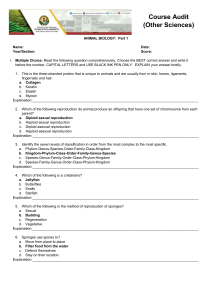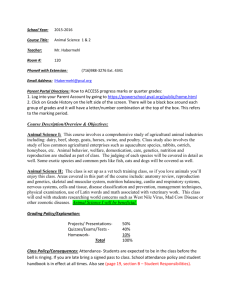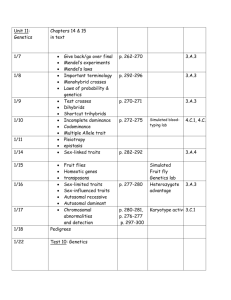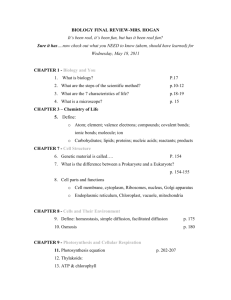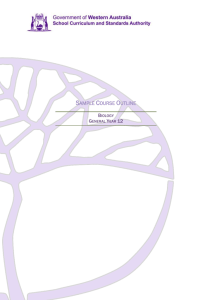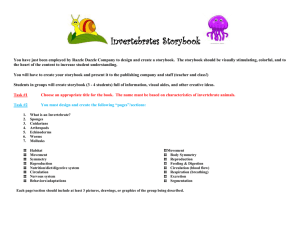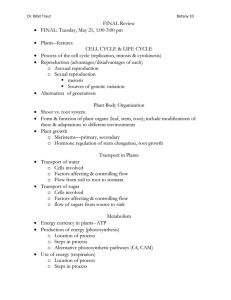Libertyville Biology Curriculum (2006 – 2007)
advertisement
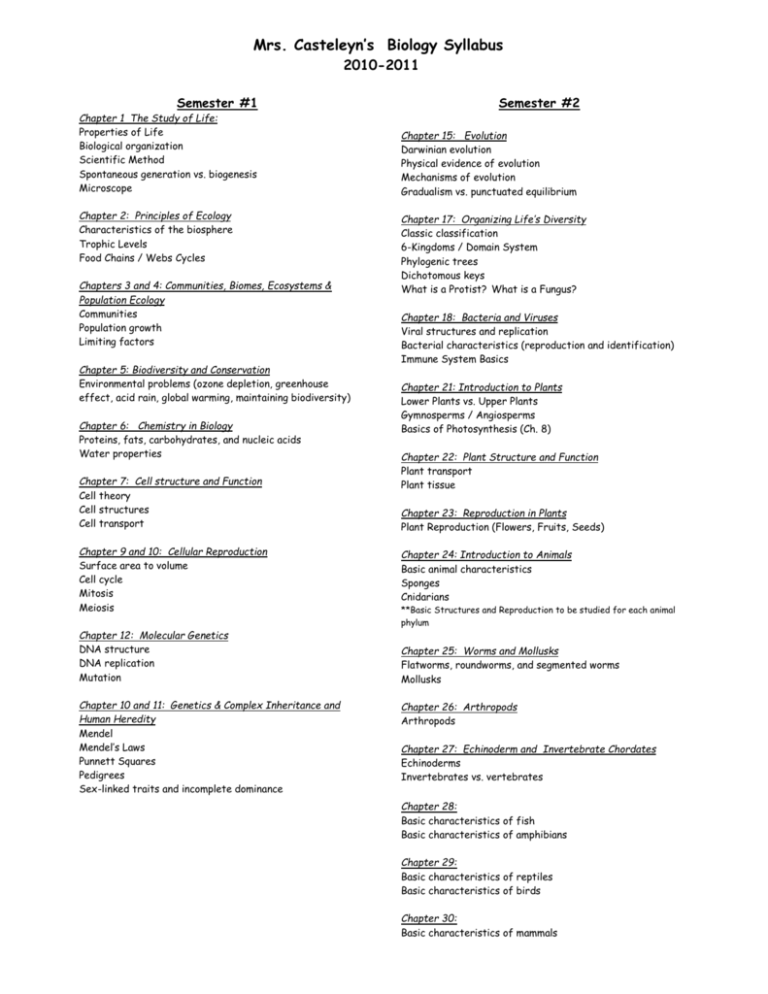
Mrs. Casteleyn’s Biology Syllabus 2010-2011 Semester #1 Chapter 1 The Study of Life: Properties of Life Biological organization Scientific Method Spontaneous generation vs. biogenesis Microscope Chapter 2: Principles of Ecology Characteristics of the biosphere Trophic Levels Food Chains / Webs Cycles Chapters 3 and 4: Communities, Biomes, Ecosystems & Population Ecology Communities Population growth Limiting factors Chapter 5: Biodiversity and Conservation Environmental problems (ozone depletion, greenhouse effect, acid rain, global warming, maintaining biodiversity) Chapter 6: Chemistry in Biology Proteins, fats, carbohydrates, and nucleic acids Water properties Chapter 7: Cell structure and Function Cell theory Cell structures Cell transport Chapter 9 and 10: Cellular Reproduction Surface area to volume Cell cycle Mitosis Meiosis Chapter 12: Molecular Genetics DNA structure DNA replication Mutation Chapter 10 and 11: Genetics & Complex Inheritance and Human Heredity Mendel Mendel’s Laws Punnett Squares Pedigrees Sex-linked traits and incomplete dominance Semester #2 Chapter 15: Evolution Darwinian evolution Physical evidence of evolution Mechanisms of evolution Gradualism vs. punctuated equilibrium Chapter 17: Organizing Life’s Diversity Classic classification 6-Kingdoms / Domain System Phylogenic trees Dichotomous keys What is a Protist? What is a Fungus? Chapter 18: Bacteria and Viruses Viral structures and replication Bacterial characteristics (reproduction and identification) Immune System Basics Chapter 21: Introduction to Plants Lower Plants vs. Upper Plants Gymnosperms / Angiosperms Basics of Photosynthesis (Ch. 8) Chapter 22: Plant Structure and Function Plant transport Plant tissue Chapter 23: Reproduction in Plants Plant Reproduction (Flowers, Fruits, Seeds) Chapter 24: Introduction to Animals Basic animal characteristics Sponges Cnidarians **Basic Structures and Reproduction to be studied for each animal phylum Chapter 25: Worms and Mollusks Flatworms, roundworms, and segmented worms Mollusks Chapter 26: Arthropods Arthropods Chapter 27: Echinoderm and Invertebrate Chordates Echinoderms Invertebrates vs. vertebrates Chapter 28: Basic characteristics of fish Basic characteristics of amphibians Chapter 29: Basic characteristics of reptiles Basic characteristics of birds Chapter 30: Basic characteristics of mammals


